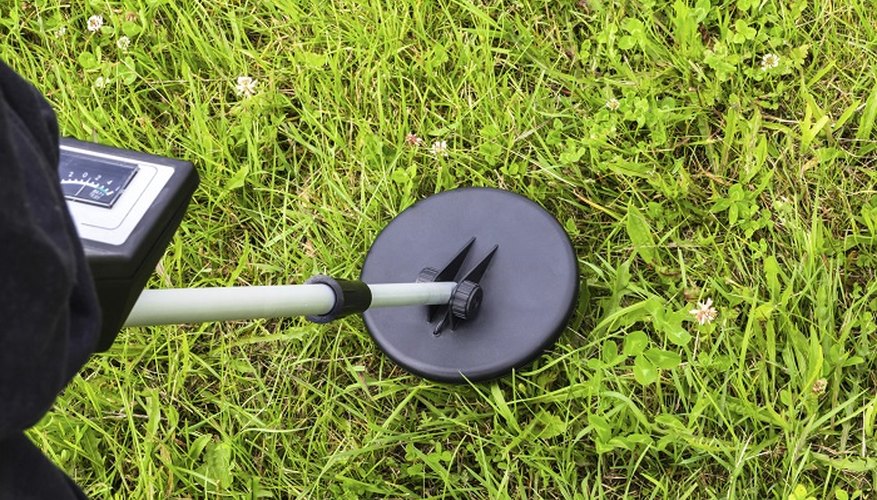Metal detecting is a fun hobby that anyone can engage in. Metal detectors are typically inexpensive and can usually be found at electronics shops or online suppliers. They are simple to use and fairly intuitive for the novice treasure hunter. Here's a guide on how to use the Micronta 4003 metal detector to find anything from lost coins to gold.
Turn the metal detector on with the "Volume" knob. This also adjusts the sound level.
Check the batteries. Turn the "Test" knob to the Battery 1 or Battery 2 position and confirm that the needle points to the green area. Then turn the knob to "Nor" for normal operation.
- Metal detecting is a fun hobby that anyone can engage in.
- Turn the "Test" knob to the Battery 1 or Battery 2 position and confirm that the needle points to the green area.
Hit the red "Auto Tune" button on the carrying handle with the head portion of the detector aimed away from any metal objects, and then turn the "Tune" knob until the needle hits 0.
- Hit the red "Auto Tune" button on the carrying handle with the head portion of the detector aimed away from any metal objects, and then turn the "Tune" knob until the needle hits 0.
Turn the "Sens" knob to the middle position.
Turn the "Mode" knob to VLF (very low frequency), and turn the "GND" knob to account for the type of ground -- such as dirt or sand -- on which you are using the metal detector.
Turn the "Mode" knob to either the TR1 or TR2 position. To set the detector to find metals such as gold or silver, set the "Discrim" knob to non-ferrous metals. You can also set it to find ferrous metals if you want to search for iron or steel.
Hold the detector with the search coil parallel to the ground. You can adjust the angle of the search coil by loosening the wing nut on the end of the shaft and swinging it to the desired position.
Swing the detector in wide sweeps about 5 cm (2 inches) off the ground.
TIP
When the detector is set to search for non-ferrous items, a decrease in the meter reading and sound will occur when a non-ferrous metal (such as gold) is detected. If a ferrous metal is detected, the reverse will happen, and there will be an increase in volume.
When the detector is set to ferrous items, an increase in volume and meter reading will indicate you have found a ferrous item (such as iron). The opposite will happen if the detector finds a non-ferrous item.
